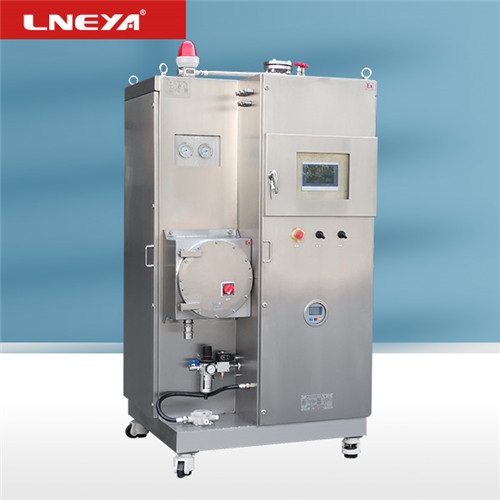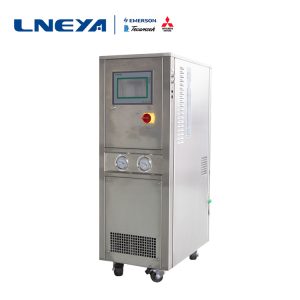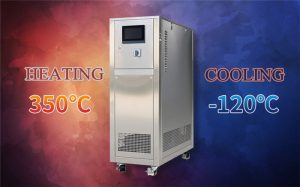Solution to oil spill of reactor cooling and heating circulator
When we use some reactor cooling and heating circulators, we will find that the system pressure fluctuates up and down as the temperature rises, and the oil tank is overflowing. So what are the reasons for these conditions in the cooling and heating circulators and how to solve them?

There are three reasons for the above situation: residual water in the pipeline or water in the heat-conducting oil component causes oil-water mixing, water vaporization at high temperature causes unstable system pressure, and oil spills in the fuel tank; the system pressure is normal at room temperature, and when the temperature increases When it rises (above 80 degrees), the system pressure gauge shakes up and down, and when there is a large amount of white smoke in the fuel tank or the heat transfer oil overflows, it can be judged that the oil and water are mixed.
Method of dehydrating boiling oil:
Remove the upper cover of the machine and open the fuel tank cover. Set the temperature to about 80 degrees first, and then combine the system pressure gauge. When the system pressure is stable, increase it by one or two degrees. If the system pressure drops again at this time, the temperature should be lowered again immediately. After the pressure stabilizes, increase it once or twice. In this way, the oil temperature is controlled at about 130 degrees under the condition of stable pressure (not more than 130 degrees, otherwise the exhaust solenoid valve from the system to the fuel tank will be closed, causing the system water vapor to fail to evaporate through the fuel tank, and the temperature will be too high. The heat transfer oil is oxidized too fast and affects its service life.) Let it run for 1-2 hours for dehydration and boiling. After the system pressure is completely stabilized, the temperature can be raised again. If there is no change in the system pressure midway, the fuel tank lid can be closed normal production. (Note: The temperature can be set directly next time the machine is turned on, no need to cook oil again.)
The expansion volume of the fuel tank is not enough, causing the oil to overflow. The system pressure did not change significantly with the increase in temperature, but the oil level of the oil tank liquid level indicator tube was continuously rising. After overflow, it can be judged that the oil tank is too small and the expansion volume is not enough. Solution: Replace the fuel tank with a larger size.
The filling of heat-conducting oil exceeds the normal level of the fuel tank, which leads to insufficient expansion space of the fuel tank and the heat-conducting oil overflows. Solution: Drain the excess heat transfer oil from the oil drain to the normal level.
Related recommendations
-
Theory of Ice Flow, Ice Water Quality, Flow and Pressure of Ice Water Machine
899The softening of water is also an important problem in the process of using chillers.The pH value of water also needs to be continuously observed. The optimum pH value should be equal to 7. The pH value greater than 7 will cause terrible corrosion...
View details -
Suitable Freezer Manufacturer
935For enterprise users, choosing a suitable freezer manufacturer is very important and must be carefully treated. Wuxi Guanya Refrigeration technology co., Ltd, as a professional freezer manufacturer, is committed to producing all kinds of low tempe...
View details -
Explosion-proof high and low temperature one machine manufacturer instructions installation point
1222After the explosion-proof high and low temperature integrated machine is delivered from the factory, it must be installed after reaching the destination. What should you pay attention to when installing? The explosion-proof high and low temperatur...
View details -
High temperature silicone oil cooling and heating cycle machine maintenance steps
970The mechanical wear of the high temperature silicone oil cooling and heating cycle machine is an important factor that directly affects the refrigeration capacity. It is necessary to record the operating parameters during use, often listen to the ...
View details
 LNEYA Industrial Chillers Manufacturer Supplier
LNEYA Industrial Chillers Manufacturer Supplier












